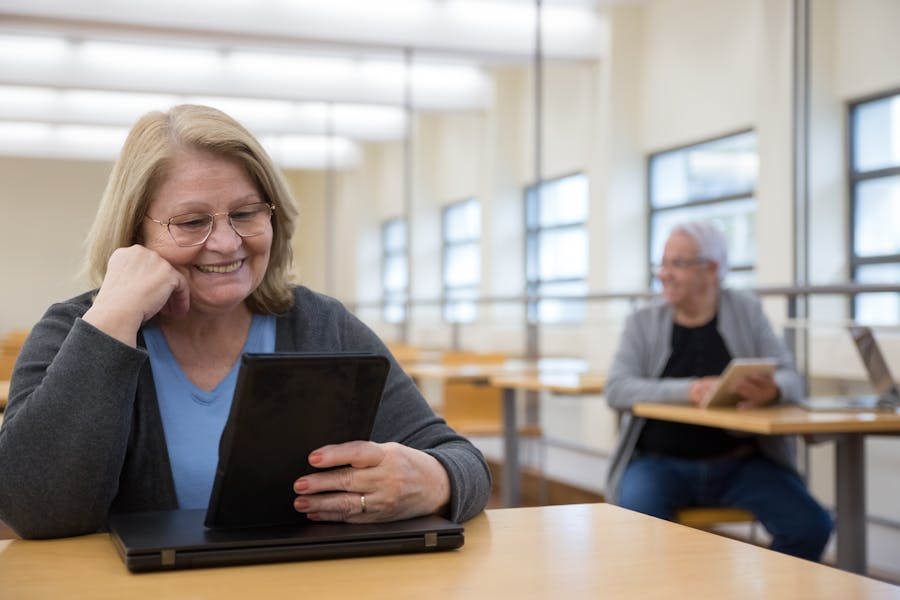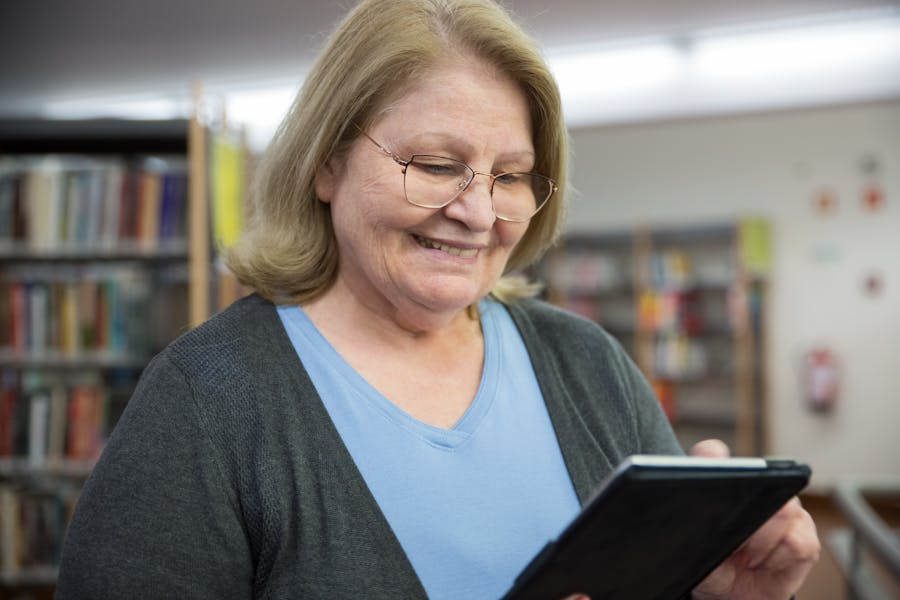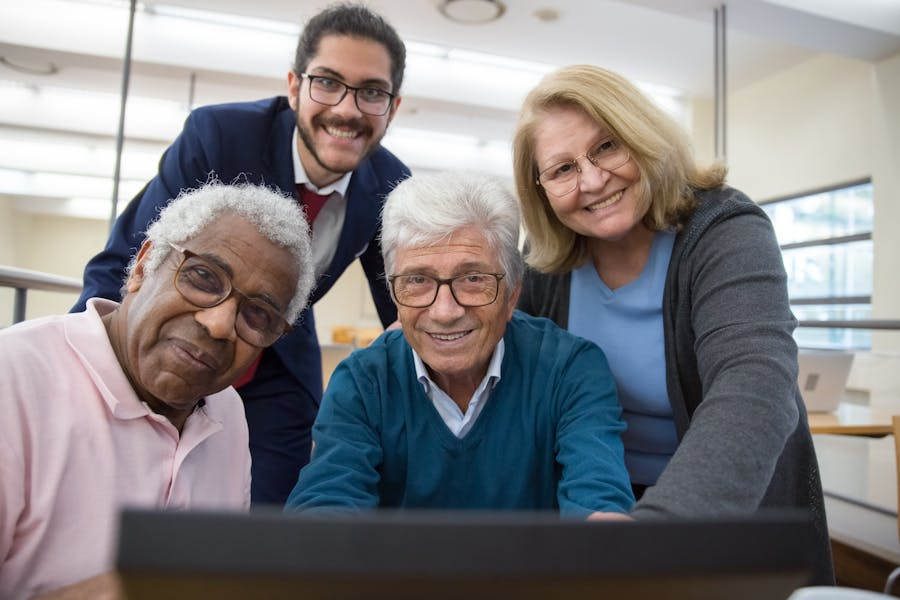


There are some simple and clever ways how technology use may lower dementia rates in seniors.
My mom never liked screens. Even the microwave was too much once it started beeping erratically. But after Dad passed, she kept reaching for her phone like it owed her something.
The video call icon is glowing faintly, waiting. I remind her: the green button. She presses hard, as if the extra force guarantees something—entry, connection, success.
Her face appears, lagging slightly. “Oh! There you are!” A laugh escapes her, surprised and victorious. “Is this good for my brain?”
She wasn’t joking; she needed to know, and expected me to respond.
When my father was dying—slowly, cruelly, from Parkinson’s—my mother sat beside him every day, watching the man she knew vanish in stages. Not dramatically, but in stutters.
Lost trains of thought. Misplaced shoes. Keys in the freezer. What terrifies her now, more than anything else, is that she might follow him. One faltering step, and the edge appears.
In the quiet months after the funeral, I noticed a shift. She started texting more. Sending photos of her garden, screenshots of rhubarb recipes.
The screen that once overwhelmed her now held a soft glow of purpose. When she calls now, it’s on her tablet. Sometimes I see her forehead. Sometimes the ceiling fan. But always, she tries.

A few days ago, I read a study that made me stop scrolling. It wasn’t a headline—it was a quiet figure buried in the fourth paragraph of a meta-analysis that spanned over 400,000 older adults.
People like my mom. People like my dad, if he’d made it long enough to learn how to use a phone with more than numbers.
The researchers, led by Jared Benge and Michael Scullin, found that older adults who regularly used digital technology were 58% less likely to show signs of cognitive impairment.
Not five. Not fifteen. Fifty-eight.
The number kept circling back in my mind. The study, published in Nature Human Behaviour, suggested that engagement with technology—real engagement, the frustrating kind that forces problem-solving and persistence—might be a shield, not a threat.
So much of what we’ve heard about screen time has been warnings: blue light, attention decay, memory loss.
But for the generation that didn’t grow up with it—the “digital pioneers,” as some call them—this interaction might be one of the few ways to keep something sharp inside from dulling.

When I think about my mother’s first email attempt, I think of her brows furrowed, her breath short with concentration, like she was defusing a bomb.
She didn’t want to click the wrong thing. Didn’t want to ask for help again.
But even then, even in her struggle, she was stretching something—cognitive elasticity, I suppose the experts would call it. Bending the mind toward something unfamiliar.
Scullin puts it plainly. That tension, the frustration itself, might be a sign that the brain is working.
“It’s a form of exercise,” he says. “If you’re doing that for years and you’re really engaging with it, even though you might experience frustration, that may be a sign of you exercising your brain.”
The word that keeps returning is “connections.” Not just neural ones. Social. Emotional. That’s another layer of this research that stood out.
Technology, used well, fosters relationships. It breaks the isolation that creeps in when driving becomes hard, when phone numbers fade, when the days start blending.
My mom used to wait for me to call on Sundays. Now she sends a midweek photo of her casserole. She Face-Times with my niece in Sacramento.
She comments on Facebook posts with a formality that feels like handwriting. And all of it, it seems, might be knitting something back together.
Scarampi, a neuroscientist from Geneva, calls this “scaffolding.” That word makes sense to me—external supports propping up what’s slowly eroding.
A GPS that helps you avoid getting lost doesn’t weaken memory, it reduces stress. A calendar alert doesn’t replace recall, it provides space to think about something else.
There’s something else the study notes, and it’s important—passivity doesn’t offer the same protection. Scrolling isn’t the same as searching. Watching isn’t the same as trying.
It’s the friction that matters. The solving. The awkward fumbling through menus and wrong clicks and blank stares that mean the mind is being used.

That’s why when Mom calls to ask why her email disappeared, I try to be patient.
Even when I know the answer will be something small—a window minimized, a battery low. Even when it’s the fifth time.
Because the effort, hers and mine, might be building something neither of us can see.
I can’t say what would’ve happened if my dad had tried. He hated the phone, disliked “being tethered,” as he called it. But sometimes I wonder.
If he’d learned to text. If he’d downloaded chess or a weather app. If his brain had had one more obstacle to work through, one more routine to hold onto.
Would it have changed anything?
Of course, we’ll never know.

Tonight, when I call, I’ll remind her where to tilt the camera. She’ll say, “Can you see me?” and I’ll answer, “Almost.” We’ll adjust.
The ceiling will dip out of frame. Her face will appear, soft with age, bright with something else.
And while we talk—about the dog, the rhubarb, whatever’s on the news—something might be happening behind the scenes. Quiet sparks, old circuits finding new paths.
Is it good for her brain?
Yes. It might be.
If you’d like to know more about memory care for seniors with dementia, contact Applewood Our House.